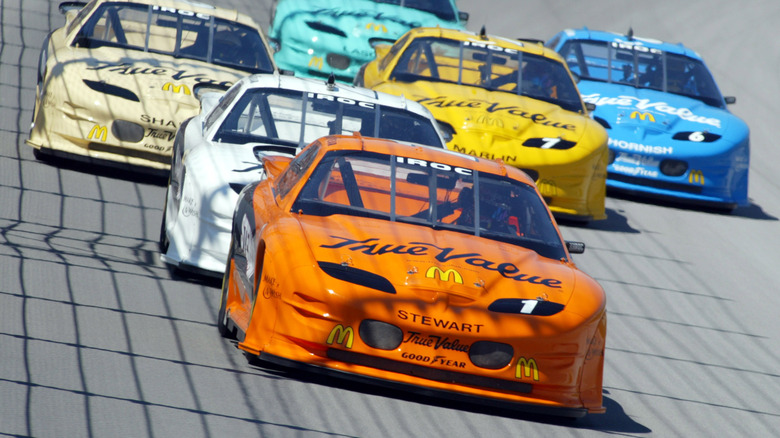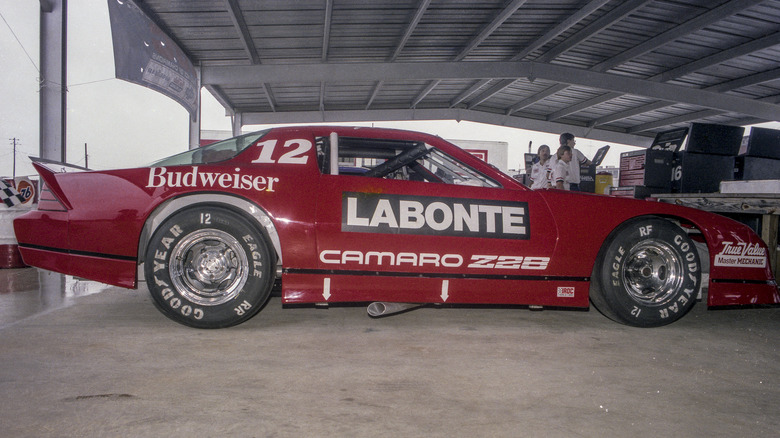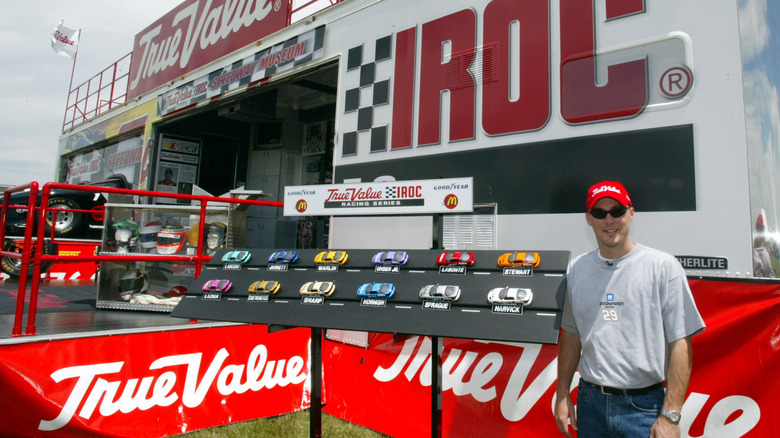What Was The International Race Of Champions Series And Why Was It Discontinued?
What would happen if you gathered some of the world's best racing drivers from a variety of disciplines, put them in identically prepared cars, and let them do battle on a variety of iconic North American racetracks? Well, you don't need to imagine what it'd be like because it happened.
It was called the International Race of Champions, better known as IROC. Enjoyed by both fans and competitors alike, the IROC series ran from the early 1970s until the mid-2000s, gathering some of motorsport's greatest drivers, including names such as Andretti, Earnhardt, Foyt, and Unser. Beyond its on-track excitement, the IROC series also helped spawn one of the most iconic American sports cars of the 1980s.
The original IROC series ran through 2006, when a lack of sponsorship interest led to its demise. But today it continues to be a fondly remembered part of American motorsport history, now with reunions — and perhaps an even larger series revival in the works. Let's take a quick Look at the legacy of this beloved racing series.
The original IROC era
IROC was founded by Roger Penske, Les Richter, and Mike Phelps in 1973 as a way to create an all-star championship for the motorsports world. It would draw top drivers from NASCAR, Indy, and Formula 1 and have them compete against each other in identical cars. Over the years, IROC would run on both oval tracks and road courses, including Daytona, Talladega, and Watkins Glen.
IROC initially used the Porsche 911 Carrera before switching to the Chevrolet Camaro. Following a short hiatus in the early 1980s, IROC returned in 1984 with a new race car based on the third-generation Chevrolet Camaro. The impact of this particular machine would go far beyond the racetrack. For the 1985 model year, Chevrolet introduced a cross-promotional, IROC-Z Camaro with added performance and aesthetic tweaks. The IROC-Z was a big success, lasting until the 1990 model year. Today, it's a favorite among Camaro fans and those who appreciate 1980s car culture alike.
After the Camaro era, IROC moved to Dodge Daytonas and Dodge Avengers in the '90s before switching to the Pontiac Trans Am for its final 11 seasons. While the earlier years of IROC featured a more rounded mix of ovals and road courses, for most of the '90s and 2000s, IROC ran ovals only. Not surprisingly, NASCAR drivers excelled in this format, with Mark Martin holding the title as the winningest IROC driver ever, with five championships. Dale Earnhardt also had great success, with four IROC championships.
Is IROC coming back?
After the 2006 season, IROC ceased operation following a lack of sponsorship funds. Additionally, there were issues with the drivers' sponsors not wanting them to race (and win) in a car from a manufacturer that they normally competed against. Mark Martin, for example, won an IROC race in a Pontiac, despite being a Ford driver in NASCAR.
For nearly 20 years, IROC sat as a dormant name from a bygone motorsport era. Then in 2024, former NASCAR crew chief and team owner Ray Evernham, who once helped bring Dodge back into NASCAR, along with entrepreneur Rob Kaufman, bought the rights to the IROC name. They held an IROC reunion event at Lime Rock that summer with original IROC cars and drivers participating. They are also scheduled to do another IROC event at the 2025 Rolex Motorsport Reunion in Monterey, California.
Ideally, the new IROC team is hoping to take the revival beyond just vintage racing events. There are hopes that at some point, IROC will develop into a fully competitive races series once again, likely with a non-manufacturer-branded race car to avoid conflicts with driver sponsorship.


